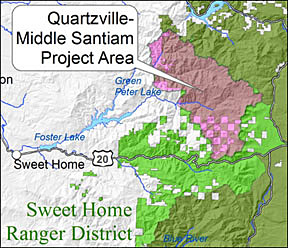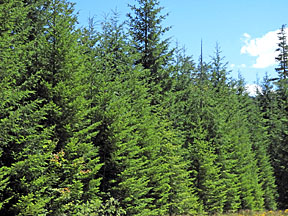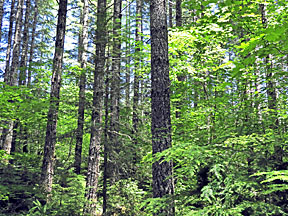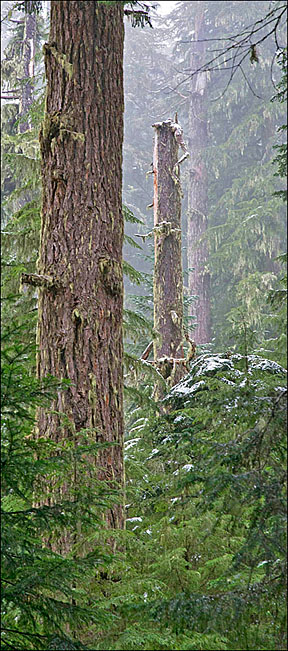|
|
| HOME | PROTECTION | NATURE | PLAN YOUR VISIT | FAQ | JOIN/DONATE | ABOUT |
| Forest
Service Logging Projects |
|
Since the creation of the proposed Douglas-Fir National Monument,
the Forest Service has proposed several large scale logging
projects within the boundaries of the Douglas-Fir National
Monument. The Friends have worked closely with other interested
groups to monitor and comment on these logging projects. The
Friends do not want to automatically oppose all logging projects
because it is the policy of the Friends that the areas of
monoculture planting after previous logging (commonly referred to
as "plantations") can return to a natural state if there is first
some "thinning." |
|
| In Spring, 2019, the Sweet Home District of the Willamette National Forest proposed a huge timber sale project in a large portion of our proposed national monument. Traditionally, timber sale projects consist of 1-10 "units" each amounting to 50-200 acres. The QMS project proposed to offer an extraordinary 290 units totaling 7900 acres. The QMS Project was one of the largest of what is an ongoing series of proposals to log in the National Forests and in the area of the proposed Douglas-Fir National Monument. |  |
| While there were significant problems
with the project, the Friends chose to try to work with the Forest
Service to modify the project to reduce its impact on the proposed
National Monument. The outcome was eventually more positive than originally proposed. All areas with older trees were removed from the project. With these compromises in place, the Friends, and other the other interested parties monitoring the project, made no further objections to the project. The Friends of the Douglas-Fir National Monument don't oppose the production of forest products (lumber), even in the proposed National Monument, under the right circumstances. There are plenty of plantations that need to be strategically and properly thinned, supporting jobs in the mills and the woods for decades to come. We support promotion of late-successional conditions (old growth) in the forest through restoration forestry. Thinning, when it is not overdone, can help advance late-successional conditions. |
 Plantation overcrowding  Thinning |
| We need an honest approach to "forest management" (logging). The primary purpose of forest management is to log: to cut down trees to make pulp and lumber. While, from an economic point of view, there is nothing wrong with logging, it should not be justified or prettied up with any other attempted rationale. Forest management is not the best way to preserve the carbon being stored by trees. The scientific consensus is that even if a forest is replanted, half or more of the carbon stored (before and after logging) in the forest is emitted as the trees are cut, processed, transported, milled, transported again, and eventually turned into whatever the final product is. Harris et al, Carbon Balance and Management 2016. Logging is not an alternative to the carbon emissions from wildfires. Across the west, logging emits nearly five times the carbon that wildfires emit. Harris, et. al. With the possible exception of thinning plantations, where the Forest Service acknowledges "Overstocked stands have contiguous vegetation that can escalate the potential for high severity wildfires," logging does not reduce or remove the danger of wildfires. Indeed, the opposite is true, the less "forest management" the less intense the fires are likely to be. Bradley, et al.; Ecosphere, 2016 |
|
The Douglas-Fir National Monument is a perfect place to recognize the truth about logging and start demonstrating a new approach to to forestry: restoration forestry. Restoration forestry: • accelerate the onset of • provide for diverse native tree species; • mimic more typical conditions of natural forest (small
openings, • do not add any roads to access areas without roads and do not reopen any roads that are closed; • facilitate the use of prescribed fire and managed fire; and • decommission unnecessary roads (protect water quality and improve habitat for native wildlife). |
 |
| Return to Home Page |